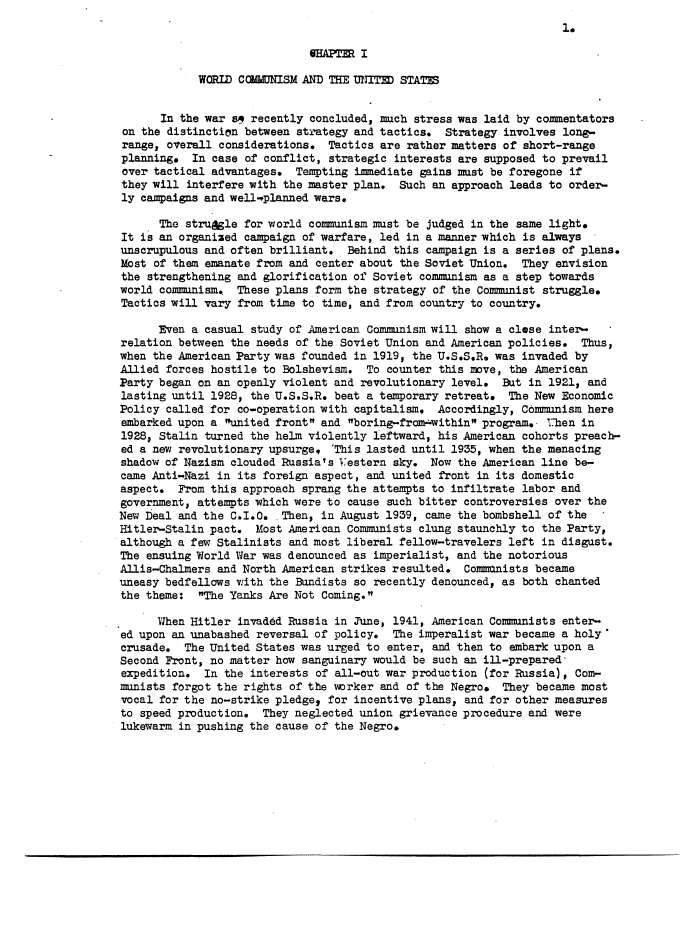 |
||||
 |
||||
| 1. 8HAFEER I WORLD COMMUNISM AND THE TOUTED STATES In the war 39 recently concluded, much stress was laid by commentators on the distinction between strategy and tactics* Strategy involves long- range, overall considerations. Tactics are rather matters of short-range planning. In case of conflict, strategic interests are supposed to prevail over tactical advantages. Tempting immediate gains must be foregone if they will interfere with the master plan. Such an approach leads to order- ly campaigns and well^planned wars. The stru^le for world communism must be judged in the same light. It is an organized campaign of warfare, led in a manner which is always unscrupulous and often brilliant. Behind this campaign is a series of plans. Most of them emanate from and center about the Soviet Union, They envision the strengthening and glorification of Soviet communism as a step towards world communism,. These plans form the strategy of the Communist struggle* Tactics will vary from time to time, and from country to country, Even a casual study of American Communism will show a close inter- relation between the needs of the Soviet Union and American policies. Thus, when the American Party was founded in 1919, the U.S.S.R. was invaded by Allied forces hostile to Bolshevism, To counter this move, the American Party began on an openly violent and revolutionary level. But in 1921, and lasting until 1928, the U.S.S.R. beat a temporary retreat. The New Economic Policy called for co-operation with capitalism. Accordingly, Communism here embarked upon a "united front" and wboring~from~withinw program, rhen in 1928, Stalin turned the helm violently leftward, his American cohorts preach- ed a new revolutionary upsurge« 'This lasted until 1935, when the menacing shadow of Nazism clouded Russia's Western sky. Now the American line be- came Anti-Nazi in its foreign aspect, and united front in its domestic aspect. From this approach sprang the attempts to infiltrate labor and government, attempts which were to cause such bitter controversies over the New Deal and the C.I,0, .Then, in August 1939, came the bombshell of the Hitler-Stalin pact. Most American Communists clung staunchly to the Party, although a few Stalinists and most liberal fellow-travelers left in disgust. The ensuing World War was denounced as imperialist, and the notorious Allis-Chalmers and North American strikes resulted. Communists became uneasy bedfellows with the Bundists so recently denounced, as both chanted the theme: nThe Yanks Are Not Coming," When Hitler invaded Russia in June, 1941, American Communists enter- ed upon an unabashed reversal of policy. The imperalist war became a holy " crusade. The United States was urged to enter, and then to embark upon a Second Front, no matter how sanguinary would be such an ill-prepared' expedition. In the interests of all-out war production (for Russia), Com- munists forgot the rights of the vrorker and of the Negro* They became most vocal for the no-strike pledge, for incentive plans, and for other measures to speed production. They neglected union grievance procedure and were lukewarm in pushing the cause of the Negro. |